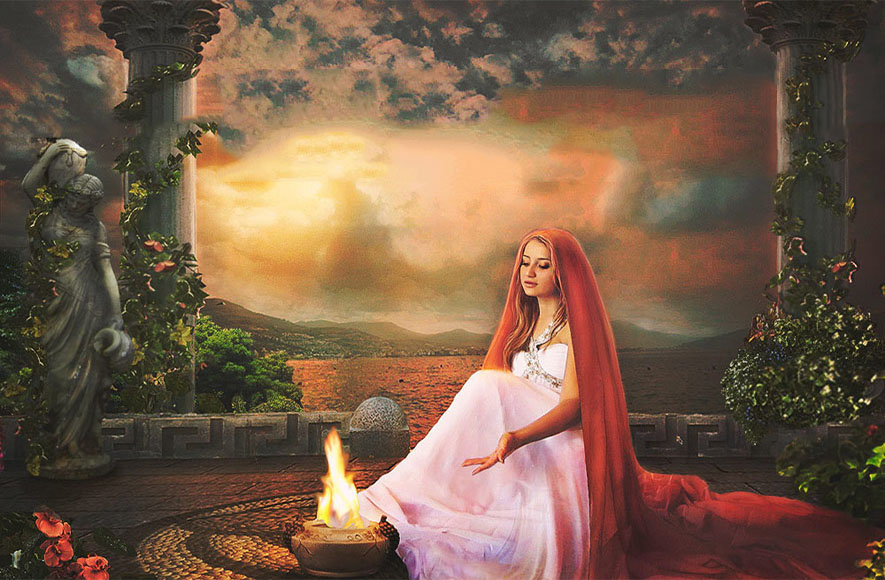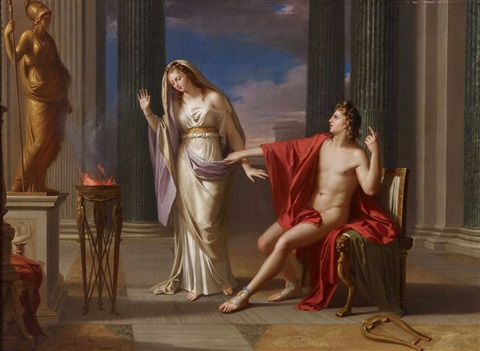Hestia or Vesta
protector goddess of home and the sacred hearth

She was the eldest daughter of Cronus and Rhea, sister of Zeus, Poseidon, Hera, Hades and Demeter. She was the goddess of the hearth of every house, which for the ancient peoples had a sacred character. Because the hearth was the center of the family, it served the daily needs and accepted its offers.
She became the symbol of hospitality and inviolable family asylum. Although the ancient Greeks believed that the home goddess remained a virgin throughout her life, she became the protector of the family, of home and hospitality. They worshiped her in every residence, as they believed that she invented the house. The first fruits of the fields were offered to her, the so-called beginnings of the fruits. They also dedicated small calves to her.
In every home, right in the center, and in a circular shape, there was a hearth. The sacred fire was constantly burning there. Of course, each city had one public hearth. From there, those who were going to campaign or colonize carried the flame, and brought the fire from the metropolis to the new homeland. This showed the bond that existed between the colonies.

The ancient Greeks believed that the common hearth of all Greece and the whole world was the hearth of Delphi. That was where the Navel of the Earth was located. If the sacred flame ever went out, it was considered a very bad omen. It would have to be re-lit directly from the sun to be spotless.
In art, HHestia is depicted as a virgin in a long dress and veil. In his hand he holds a scepter, a lamp or a torch or a branch with flowers and fruits.